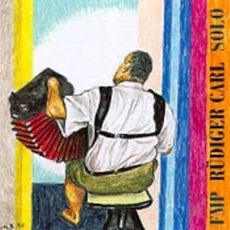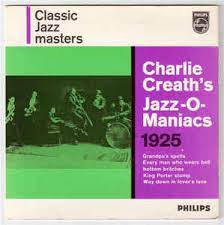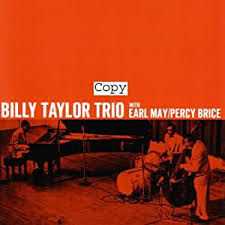
The Jazz Voyager
Masked up and on the wing to that city by the bay is the next stop for this Jazz Voyager to take in an evening at the Comstock Saloon situated at the crossroads of North Beach, Chinatown, Financial District and Jackson Square. I’ve been hearing about Gaucho Jazz, and having sparked my curiosity, decided to satisfy or see if it will kill this cat. So it’s off to hear them live and experience a performance for myself.
Of course while I’m in this city I’ll ride another trolley, make my way down the crooked street, roll across the bridge to Berkeley, go hang in the Tenderloin, Haight~Ashbury and Nob Hill and just enjoy the sights and sounds. I’ve also heard about this Dynamo Spiced Chocolate Donut that the saloon serves up with vanilla ice cream and during the night I’m going to see what this dessert hoopla is all about.
Showtime is 8:00pm ~ 11:00pm and there is no mention of a cover or reservations required. I guess I’ll be dropping in a little before showtime. The address of the Comstock Saloon is 155 Columbus Avenue, San Francisco, California 94133. For more information, the number is 415-617-0071 or comstocksaloon.com.
More Posts: accordion,adventure,album,bass,club,drums,festival,genius,jazz,museum,music,piano,preserving,restaurant,saxophone,travel,trumpet

Daily Dose Of Jazz…
Thomas Joseph Gumina was born on May 20, 1931 in Milwaukee, Wisconsin. He began playing accordion at age eleven, and took lessons on the instrument in Chicago, Illinois throughout the second half of the 1940s.
He began his professional career working with Harry James on television in 1952 as an accompanist for popular tunes, and in 1955 Gumina began working solo and as a leader with an ensemble. He recorded with Buddy DeFranco and Willie Smith in the 1960s.
Tommy started experimenting with modifying an electric accordion, whose amplified sound resembled that of an electronic organ. During the Seventies he was occasionally active as a performer, working with Art Pepper in 1974, but he increasingly turned his concentration to his amplifier manufacturing business, Polytone Musical Instruments which was based in North Hollywood, California.
Along with guitarist Joe Pass, they co-founded Polytone Records in 1987. Accordionist Tommy Gumina, who was also a musical instrument builder, transitioned on October 28, 2013.
More Posts: accordion,bandleader,history,instrumental,jazz,music

Daily Dose Of Jazz…
Rüdiger Carl was born on April 26, 1944 in Goldap, Poland ( formerly East Prussia) and has been involved in improvised music since 1968. He recorded his first record in 1972 and then began playing with a wide range of musicians including Arjen Gorter, Makaya Ntshoko, Louis Moholo, Maarten van Regteren Altena, Tristan Honsinger, Johnny Dyani and Han Bennink.
He maintains a long-standing partnership with Irene Schweizer that began in 1973 and continues to the present day. For a three year period, from 1973 to 1976 Carl was a member of Globe Unity Orchestra. He started giving solo performances in 1977 and the following year started two other long-term professional partnerships, with Sven-Åke Johansson and Hans Reichel.
Rüdiger’s most striking change in improvised music came when he gave up the saxophone and began performing with the accordion in duets with Hans Reichel. Though he continued to play the two instruments virtually side-by-side, adding clarinet to his arsenal, recorded Vorn which featured a version of the McCartney tune Those Were The Days. The COWWS Quintet was formed, continuing his musical relationship with Schweizer along with Philipp Wachsmann, Jay Oliver and Stephen Wittwer.
In addition to the COWWS, he performs with the Canvas Trio, in duos with Mayo Thompson of the Red Crayolas and Joëlle Léandre. During the Eighties he organized concerts of Musik im Portikus and beginning in 1994 has led the F.I.M. Orchester in Frankfurt/M.
Accordionist Rüdiger Carl is also an arranger and composer and continues to record and perform.
More Posts: accordion,arranger,bandleader,clarinet,composer,history,instrumental,jazz,music

Daily Dose Of Jazz…
Charles Cyril Creath was born on December 30, 1890 in Ironton, Missouri and at an early age was playing in traveling circuses and in theater bands in the decade of the 1900s. He moved back to St. Louis, Missouri around 1919 and there he led bands playing on the Streckfus company’s riverboats traveling on the Mississippi River between New Orleans, Louisiana and St. Louis.
His ensembles became so popular that he had several bands under his own name at one time in the 1920s. A young Gene Sedric, later a mainstay of Fats Waller’s combo and orchestra, played with Creath on riverboats in the 1920s, and perhaps early 1930s. He co-led a group on the SS Capitol in 1927 with Fate Marable.
Late in the 1920s Charlie suffered from an extended illness, and primarily played saxophone and accordion instead of trumpet afterwards. He and Marable played together again from 1935 to 1938, and toward the end of the decade he opened a nightclub in Chicago, Illinois. He worked in an airplane manufacturing plant during World War II and retired in 1945. His last years were plagued with illness.
Aside from his brother-in-law, Zutty Singleton, members of Creath’s bands included Ed Allen, Pops Foster, Jerome Don Pasquall, Leonard Davis, and Lonnie Johnson. He recorded as a leader for Okeh Records between 1924 and 1927 billed as Chas. Creath’s Jazz-O-Maniacs, which were some of the hottest and most collectable jazz items recorded for OKeh’s race 8000 series.
Trumpeter, saxophonist, accordionist and bandleader Charlie Creath passed away on October 23, 1951, in Chicago.
More Posts: accordion,bandleader,history,instrumental,jazz,music,saxophone,trumpet

Daily Dose Of Jazz…
Kamil Běhounek was born March 29, 1916 in the Southern Bohemian section of Blatná, Czech Republic. An autodidact on accordion, having learned to play by imitating recordings and BBC broadcasts, he studied law in Prague, Czech Republic and began performing in clubs. His first recordings on solo accordion date from 1936 and in the late 1930s he worked with the Blue Music Orchestra, Rudolf Antonin Dvorsky, Jiří Traxler, and Karel Vlach.
In 1943, he was forcibly compelled by the Nazis to go to Berlin, Germany where he created arrangements for the bands of Lutz Templin and Ernst van’t Hoff. Upon returning to Czechoslovakia in 1945, he used some of these arrangements for his own band. Kamil returned to Germany the following year and continued arranging for bandleaders Adalbert Luczkowski, Willy Berking, Heinz Schönberger, and Werner Müller.
He played with his own ensemble in Bonn, Germany and, after 1948, in West Germany for American soldiers’ clubs. Between 1968 and 1977, Běhounek recorded several albums of folk music, but continued to play swing with his own groups. He wrote an autobiography, Má láska je jazz (Jazz Is My Love), which was published posthumously in 1986.
Accordionist, bandleader, arranger, composer, and film scorer Kamil Běhounek, who also occasionally played tenor saxophone, passed away on November 22, 1983 in Bonn.
More Posts: accordion,arrangr,composer,film scorer,history,instrumental,jazz,music,saxophone



